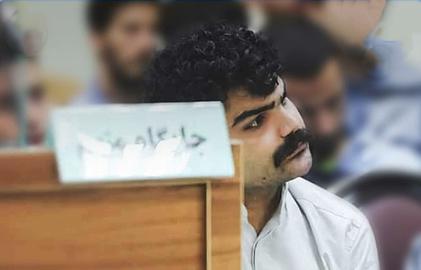
When the court handed down its verdict on the case of Jila Baniyaghoob, the journalist and women’s rights activist could not believe what she was being told. She read over the details of her sentence several times. Finally, she asked the court’s secretary to read it to her:
“Barred from journalism for 30 years”
She remembered what her interrogator told her: “Had we sentenced you to 10 years in prison, you would not have been as miserable.”
After the disputed presidential elections of 2009, Baniyaghoob was arrested, sentenced to one year in prison and then barred from journalism for 30 years. “Their verdicts are aimed at inflicting pain,” she told IranWire. “They were aware of one thing: my love of journalism.”
A huge number of journalists were blacklisted following the 2009 election. The practice, called “pen-banning” in Persian, dates back to before the birth of the Islamic Republic, when the country operated under a constitutional monarchy. These writers and journalists are not behind bars but, as Baniyaghoob puts it, they are not free either. “A journalist without professional identity is in a kind of prison, but on this side of the bars.”
“We don’t have ‘banned pens’", said President Hassan Rouhani in an interview with Iranian television in December 2013. “We have turned them into ‘sharp pens.’” These journalists, he added “can get busy writing whatever they want within the framework of the law.” Shortly after, journalists, including Baniyaghoob and Isa Saharkhiz, another “banned pen”, criticized the president’s statement on their Facebook pages. Saharkhiz called for Rouhani to stop using double-edged words. Not long after, however, in a January 2014 statement to journalists, Ali Jannati, Rouhani’s Minister of Culture, echoed the president’s sentiments.
Two-Pronged Attack
According to the Iranian journalist Mohammad Heydari, blacklisting journalists started in Iran in 1974 under Amir Abbas Hoveyda, the Shah’s prime minister at the time. Heydari told IranWire that Hoveyda launched a two-pronged attack against the press: he revoked the licenses of numerous newspapers and magazines, many of which had low circulations, and then blacklisted about 30 journalists, mainly from the national dailies Keyhan and Ettela’at.
Some were placed on a list, which the Ministry of Information sent to the newspapers, but others were barred through verbal messages. “The main point that escaped scrutiny at the time,” Heydari says, “was that some were real journalists, while others were fake and used journalism as a scam for shady practices, such as demanding ransom.”
Heydari adds that the practicing journalists did not receive any compensation, whereas the individuals who used journalism for nefarious means did. “They went to the Ministry of Information (the predecessor of today’s Ministry of Islamic Guidance) and received considerable sums. At that time, the publishers of Keyhan and Ettela’at did not fire the blacklisted journalists and did not stop paying them, but instead appointed them to other positions.”
Under the Islamic Republic, Heydari says, the process of becoming a “banned pen” is similar. Some receive the court verdict in writing, while others are informed verbally, in which case the journalist is instructed to record his or her own verdict in writing so there is adequate documentation of the decision.
Journalist Keyvan Samimi was sentenced to six years in prison and, like Baniyaghoob, was barred from journalism for 30 years following the 2009 elections. “It is a ridiculous verdict,” says a friend of his. “His age at the time of the trial was 61. This means that when he is 91 he will be allowed to get back to work.” During pretrial interrogations, his friend says, Samimi was given the choice of a “TV confession” or a six-year prison term. He refused the first option and was given the prison sentence.
Blacklisting a journalist is not only about silencing his or her pen. A journalist also writes to make a living. This point is often overlooked, says Baniyaghoob. “When you take away somebody’s job and civil rights, you want to destroy that person. In short term, of course, people like me will suffer financially but the fact is that banning us is like banning video tapes. Who would have thought that one day electromagnetic waves would make videotapes obsolete? Journalism takes many shapes and is not limited to working with a piece of paper for a newspaper with an approval seal from the Ministry of Islamic Guidance.”
After the sentence banning her from journalism was handed down, Baniyaghoob repeatedly went to court to object and wrote letters to the same effect. “When you issue such a verdict,” she asked the judge, Pir Abbasi, “do you ever wonder whether either of us would be alive 30 years from now?” Abbasi told her not to worry about it. “It will be overturned on appeal,” he said. The interesting thing, says Baniyaghoob, is that “the judge issued a verdict in which he did not believe. He himself believed that it would be overturned.”
The Writer, Not the Writing
Censorship in Iran is widespread, admits Ali Asghar Ramezanpour, who was deputy minister of cultural affairs at the Ministry of Culture and Islamic Guidance under the reformist president Mohammad Khatami. Any word, he told IranWire, can trigger a reaction or can be viewed as a means of crossing a “red line”. Most reactions are prompted by four topics: “sexual relations”, “religion, especially the Shi’a religion”, “the clergy as seen from non-political angles” and “political views that go directly against the pronouncements of the Supreme Leader”.
Usually the charges are general rather than specific or documented. For example, the list of charges against Samimi, according to his friend, made no reference to his work as a journalist. Instead, they accused him of “activities contrary to national security”, a boilerplate phrase regularly used by the Ministry of Intelligence and National Security.
According to Ramezanpour, the practice of blacklisting has an enormous and damaging impact on journalists and writers in Iran, sending a message that “their political background and their place in the cultural or political scene is more important than what they have written”. There’s a big difference between censoring a book and blacklisting a writer: banning the publication of a book prevents a specific text from being public accessible; but the goal of banning writers is to isolate political, cultural or religious figures and completely remove them from the cultural arena.
More than one authority has the power to blacklist a journalist, including the Ministry of Islamic Guidance and Culture, security agencies or the High Council of National Security. “The Intelligence Ministry, the prosecutor’s office or the intelligence arm of the Revolutionary Guards can officially or verbally take such an action,” says Ramezanpour. Representatives of these authorities monitor print, broadcast and digital media in order to identify people they want to target and then present them as subversives.
Prior to Ahmadinejad’s presidency, he adds, the rule was that figures who were known as “counter-revolutionaries” or “officially opposed” were considered “pen-banned”. Later, however, this list shrank and was replaced with a list of people specifically barred from journalism. Remezanpour gained access to such a list during Ahmadinejad’s administration. It contained the names of 400 writers and translators. It was submitted to the Cultural Affairs Office of the Ministry of Islamic Guidance; inspectors were told to monitor the media and prevent these listed journalists from publishing their writing. “It was said that the list was prepared by an authority outside the ministry,” Ramezanpour adds.
Following Rouhani’s election in June, journalist Keyvan Samimi, who was on furlough for medical treatment, wrote an open letter to the president, asking him to concentrate his efforts on “improving the livelihood of the people”, “restoring and safeguarding the lost rights” of Iranians and “setting right the situation of the media”. He asked Rouhani to put him on a “just and public” trial so that people can judge for themselves.
Despite Rouhani and the minister of culture stating that “banned pens” have turned into “sharp pens”, there are still many writers and journalist who remain blacklisted. And there are many who remain in prison.
visit the accountability section
In this section of Iran Wire, you can contact the officials and launch your campaign for various problems

























comments